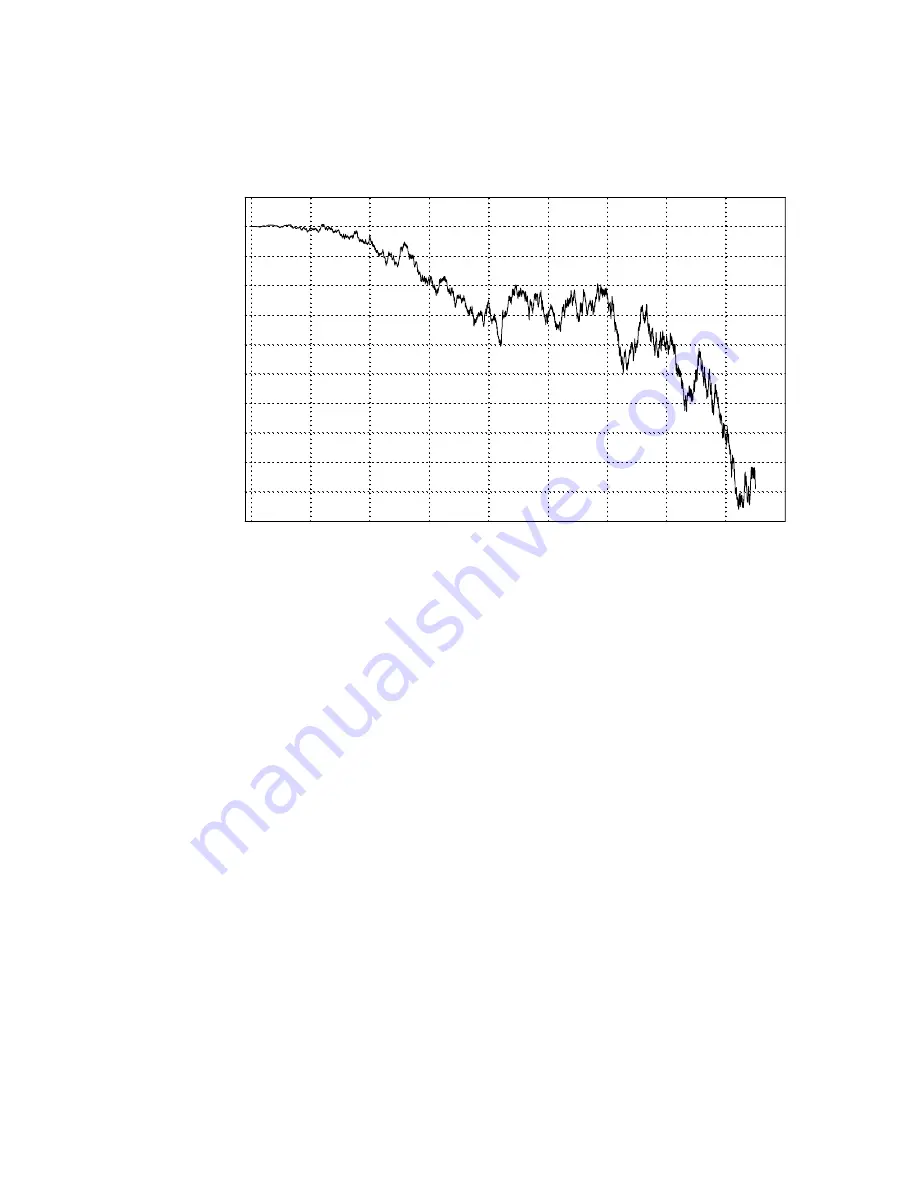
Relative accuracy for TI-89/92+ Savage benchmark
Number of iterations 'n'
0
500
1000
1500
2000
2500
3000
3500
4000
4500
Re
la
ti
ve
a
ccu
ra
cy
-1e-8
-9e-9
-8e-9
-7e-9
-6e-9
-5e-9
-4e-9
-3e-9
-2e-9
-1e-9
0e+0
1e-9
As expected, the relative error starts out at zero, then increases with the number of iterations.
However, the error does not increase smoothly, and varies considerably over short ranges. For
example, the relative error is about -3E-9 at 2500 iterations, but was -2E-9 at about 2200 iterations.
Since the actual shape of the relative error curve will depend on the number of significant digits, as well
as the algorithms used for the evaluated functions, some other statistical measure would be a better
indication of the relative accuracy. Some candidates are the RMS error over some range, or even the
mode. Of course, the best description of the relative error is given by the error plot itself.
References:
Byte magazine, 1985, vol 10 no 11
Sky & Telescope magazine, March 1987
Neither of these references discuss the benchmark in much detail.
[6.51] Review of TI-89 / TI-92 Plus Calculus Tools
(This review was written by George C. Dorner, September, 2001)
This is a nice little package of programs for these two TI calculators. The package is downloadable for
either calculator (which must be using the latest version of the calculator operating system, V. 2.03)
from the TI online store at http://epsstore.ti.com/. Here’s one of the best parts: it’s free!
6 - 88
Summary of Contents for TI-92+
Page 52: ...Component side of PCB GraphLink I O connector detail 1 41...
Page 53: ...LCD connector detail PCB switch side 1 42...
Page 54: ...Key pad sheet contact side Key pad sheet key side 1 43...
Page 55: ...Key cap detail 1 44...
Page 57: ...Component side of PCB with shield removed A detail view of the intergrated circuits 1 46...
Page 410: ...void extensionroutine2 void Credit to Bhuvanesh Bhatt 10 4...
















































